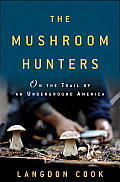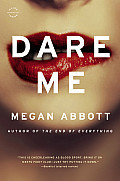Four New-ish Ones
I was not part of the cult of Special Topics—I don’t know why I missed it, but I did, and so Pessl’s sophomore outing didn’t mean all that much to me—it was just a book that was gonna get some attention. It’s easy, after reading this, to get why the book was so anticipated, and it’s clear that Pessl’s got more than enough talent to pull of some great, great things in narrative.
However: holy hell is this an overdone book. It’s not *bad* at all: it’s just (as PTAnderson shouted) Too fucking too! The book’s long by at least a hundred pages, and there’s a handholding going on, from author to reader, that’s frustrating hugely: things are made clear as shitty crystal, to the point that whatever minor satisfactions could’ve been offered to the intrepid, putting-things-together-on-her-own reader are totally gone, sacrificed for the sake of Big, Obvious Constructed Narrative. The specifics matter to a degree: there’s a filmmaker who apparently harmed the people on his movie sets, and his horror films are so shocking, so horrific, they’re screened clandestinely. Fine enough. And the filmmaker’s being investigated by a writer whose professional life was destroyed after he made unsupportable accusations about said director. And now the writer’s trying to Get The Story, and so the whole thing’s this big detective ploy, but it’s underwhelming as stale, lukewarm coffee: the novel’s not even bad so much as eh. Whole sections are skippable. Any ‘surprises’ are so whatever-ish you almost feel bad. It’s a watery mess, Night Film. Here’s to hoping next time out Pessl’s edited down to diamond—there’s a potentially good story here, but it’s so larded you’d be forgiven for not even being able to tell.
Holy shit read this book. Read this book. Here’s how good the book is: I’m a 34 year old college professor and this thing’s about 17 year old high school cheerleaders and the dark jockeying done among young women and I couldn’t get enough of this thing. Couldn’t read it fast enough. The story’s superb, sure, but the writing, my god: if Megan Abbott’s next book isn’t splashed everywhere and made as big a deal of as, say, Gone Girl, I want my money back (you hear me book industry!??!?). This fucking thing’s merciless. The details hardly matter: just get it and read it. If this isn’t the year’s most propulsive read, I’ll eat my boots whole.
The Mushroom Hunters by Langdon Cook
Guy follows foraged-for mushrooms from the folks who pick them illegally to the middle-men who get them to restaurants. It’s really, really good, and if you care about 1) mushrooms, 2) foraging for food, or 3) the odd ways in which regulations affect damn near everything, do it. The book’s really good, honestly (Cook’s an admitted fungi-freak, and his enthusiasm keeps this thing hustling where a drier, more disinterested guide would be just lost), but you’ve sort of got to love the specifics (mushrooms and the woods they grow in) to fall for the thing (maybe not, honestly: there’s a little bit about the middle-men, the providers of weirdly-sourced food and how that food makes its way to high-end restaurants, and it’s worth it for that as well). Anyway: good.
Marking Modern Times by Alexis McCrossen
I’m a softie for most things horological, so this one was right in my wheelhouse, but the real coolness of what McCrossen’s doing here is addressing the moment at which the table for modernism was set by standardizing time. It’s a weird notion to even wrap your head around (as McCrossen points out right at the start), given that we live at a time in which we’re surrounded by (arguably) too many devices telling us the time—weird to consider the historical moment at which time not only wasn’t necessarily standardized but wasn’t all that public (to say nothing of the fact that time being so minutely [ha ha!] divided up is a recent-ish thing: did a 38-day trek into unknown territory in 1826 really necessitate knowing the instant one arrived at the Pacific?).
What McCrossen does best in Marking Modern Times is address this wonderful and interesting historical moment in which public clocks—all those old glorious relics on buildings in downtowns—became Things, became How Things Were Done, and then what they were eclipsed by, and how and why that moment has passed (consider the fact that measuring accurate time mechanically was a hell of a feat, and that the modern equivalent—some huge-faced thing with digital guts as boringly accurate as my iphone—can’t hold a candle, inspiration-wise). It’s a riveting, nostalgia-inducing read: I happen to have my share of mechanical watches, but if I didn’t, this book would be all the inducement necessary to prompt the purchase of a score of them.







